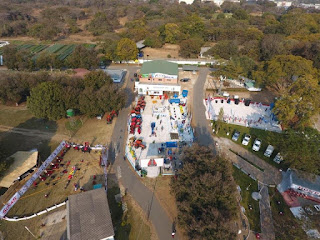ZAMBIA’S TRADE
DEFICITS ACCERATES AS INFLATIONS RATE SLOWS DOWN.
ZAMBIA’s
imports have continued to exceed exports as the country recorded an increased
trade deficit of K473.9 million in July 2016, from 355.4 million recorded in
June 2016 representing a 33.3 percent increase in the trade deficit.
The
increase means that the country imported more in July 2016 than it exported in
nominal terms.
And
Central Statistical Office (CSO) has revealed that traditional exports still
take up a larger proportion of Zambia’s exports at 71.3 per cent compared to
non-traditional exports (NTEs) valued at 28.7 per cent.
According
to CSO Director of Census and Statistics John Kalumbi, Zambia recorded an
increased trade deficit of K473.9 million in July, up from K355.4 million
recorded in June, representing a 33 per cent increase.
A
trade deficit represents an outflow of domestic currency to foreign markets.
Market
analysts have noted that high trade deficits could have a bearing on the
country’s economic recovery prospects.
Mr.
Kalumbi further disclosed that the consumer and capital goods still constitute
the largest proportion, collectively accounting for over 65 per cent of imports
into the country above raw materials and intermediate goods.
He
further revealed that the major import products by category in July 2016 were
capital goods, accounting for a share of 37.7 per cent. The consumer goods
category was second with 27.5 per cent, followed by intermediate goods and raw
materials, accounting for 18.7 and 16.1 per cent respectively,” it stated.
And
Mr. Kalumbi further indicated that as at July 2016, traditional exports still
took up a larger proportion of Zambia’s exports at 71.3 per cent compared to
NTEs valued at 28.7 per cent, which indicate that the economy remains
heavily-based on metal exports for foreign exchange earnings.
Meanwhile
Mr. Kalumbi says a decrease of 4.9 percent in the total value of metal exports
from K4, 171.0 million in June to 3,965.0 million in July.
The
overall contribution of metals and their products to the total export earning in
July and June 2016 average 71.1 percent whilst Traditional exports decreased by
7.1 percent from 1, 721.3 million in June to K1, 599.1 million in July 2016.
And
the annual inflation rate for August 2016 has decreased to 19.6 percent from
20.2 percent recorded in July 2016.
Central
Statistics office director John Kalumbi said the decrease in the annual
inflation rate was mainly attributed to decrease in food prices.
Mr.
Kalumbi said of the 19.6 percent inflation rate recorded in August, food and
non-alcoholic beverages products accounted for 12.4 percent points while
non-food products accounted for 7.2 percentage points.
He
also said that the monthly inflation rate for August 2016 was recorded at 0.4
percent compared to 0.1 percent recorded in July 2016.


















